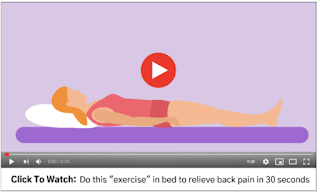While there are many causes of back pain, poor posture is one of the most common. Poor posture can lead to muscle imbalances, strain, and pain in the neck, shoulders, and back. In this article, we will explore the connection between poor posture and back pain.
What is poor posture? Poor posture refers to the way we hold ourselves when we sit, stand, or walk. When we have poor posture, our spine is not aligned correctly, which can cause strain on the muscles and joints. Some common examples of poor posture include slouching, hunching over a computer, and carrying a heavy bag on one shoulder.
How does poor posture lead to back pain? When we have poor posture, our spine is not in its natural alignment, which can cause strain on the muscles, ligaments, and joints. This strain can lead to pain and discomfort in the back, shoulders, and neck. Over time, poor posture can also cause muscle imbalances, which can make it difficult to maintain good posture.
What are the common types of poor posture? There are several types of poor posture that can contribute to back pain. These include:
Forward head posture - This is when the head is tilted forward, causing strain on the neck and upper back.
Rounded shoulders - This is when the shoulders are rounded forward, causing strain on the upper back and neck.
Swayback posture - This is when the lower back is arched excessively, causing strain on the lower back muscles.
Slouching - This is when the shoulders are hunched forward, causing strain on the upper back and neck.
How can we improve our posture to alleviate back pain? Improving our posture is an important step in preventing and alleviating back pain. Some tips for improving posture include:
Stand up straight - Try to keep your shoulders back, chest out, and head in a neutral position.
Sit properly - Sit with your feet flat on the ground, and your back straight. Use a cushion if necessary to support your lower back.
Take breaks - If you sit for long periods, take breaks to stretch and move around.
Exercise - Regular exercise can help strengthen the muscles that support good posture.
Get support - Use supportive chairs, pillows, and mattresses to help maintain good posture.
In conclusion, poor posture is a common cause of back pain. By improving our posture through proper body alignment, regular exercise, and taking breaks, we can prevent and alleviate back pain. If you are experiencing chronic back pain, it is important to consult with a healthcare provider to determine the underlying cause and develop an appropriate treatment plan.
What is poor posture? Poor posture refers to the way we hold ourselves when we sit, stand, or walk. When we have poor posture, our spine is not aligned correctly, which can cause strain on the muscles and joints. Some common examples of poor posture include slouching, hunching over a computer, and carrying a heavy bag on one shoulder.
How does poor posture lead to back pain? When we have poor posture, our spine is not in its natural alignment, which can cause strain on the muscles, ligaments, and joints. This strain can lead to pain and discomfort in the back, shoulders, and neck. Over time, poor posture can also cause muscle imbalances, which can make it difficult to maintain good posture.
What are the common types of poor posture? There are several types of poor posture that can contribute to back pain. These include:
Forward head posture - This is when the head is tilted forward, causing strain on the neck and upper back.
Rounded shoulders - This is when the shoulders are rounded forward, causing strain on the upper back and neck.
Swayback posture - This is when the lower back is arched excessively, causing strain on the lower back muscles.
Slouching - This is when the shoulders are hunched forward, causing strain on the upper back and neck.
How can we improve our posture to alleviate back pain? Improving our posture is an important step in preventing and alleviating back pain. Some tips for improving posture include:
Stand up straight - Try to keep your shoulders back, chest out, and head in a neutral position.
Sit properly - Sit with your feet flat on the ground, and your back straight. Use a cushion if necessary to support your lower back.
Take breaks - If you sit for long periods, take breaks to stretch and move around.
Exercise - Regular exercise can help strengthen the muscles that support good posture.
Get support - Use supportive chairs, pillows, and mattresses to help maintain good posture.
In conclusion, poor posture is a common cause of back pain. By improving our posture through proper body alignment, regular exercise, and taking breaks, we can prevent and alleviate back pain. If you are experiencing chronic back pain, it is important to consult with a healthcare provider to determine the underlying cause and develop an appropriate treatment plan.

Commenti
Posta un commento